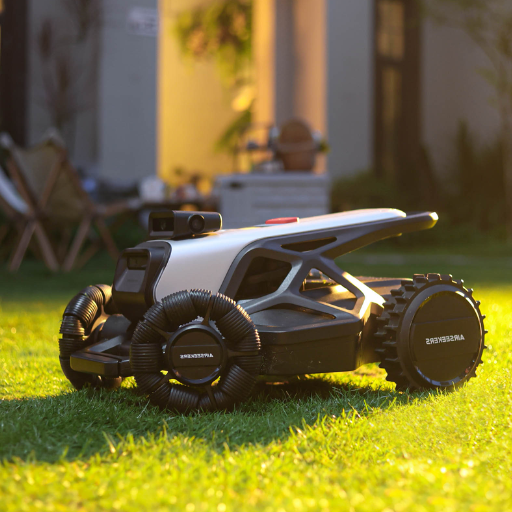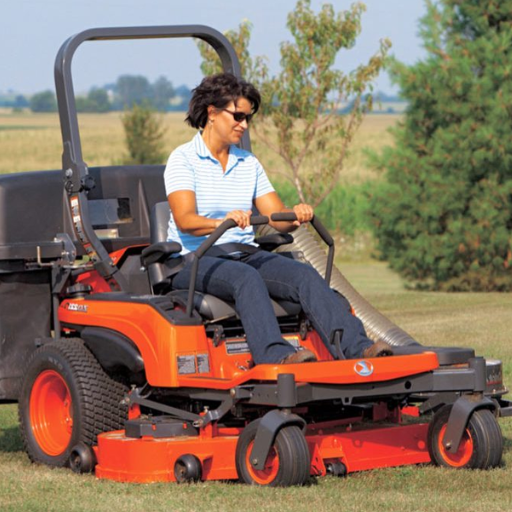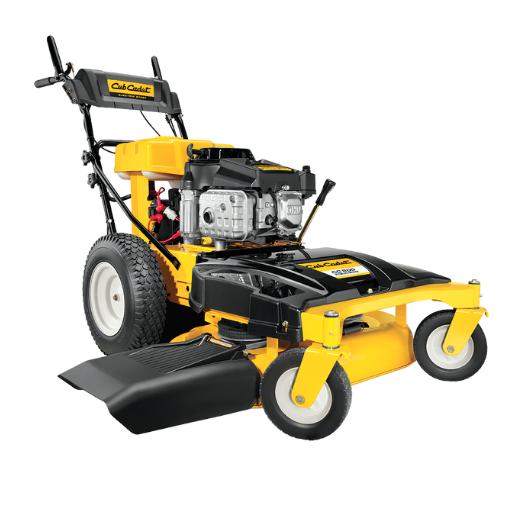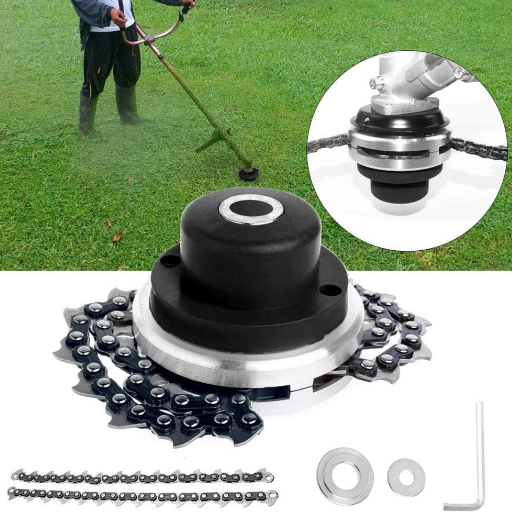Every journey begins with a first step. This is how it happens also with embroidery. (Recommended: China Sewing Machine Manufacturers) At some point you find an urge to just go to the nearest classroom and struggle with the cleaning of the embroidery machine claiming, yes, I want to learn this. However, it is important to note that beginners in any field lacking experience tend to have an overwhelming viewpoint towards machines. Hence, be easy on ourselves and tame our enthusiasm just for a moment, as choosing the right machine can indeed be difficult. This raises several questions and in this article, we shall answer some of them, such as: How much does it cost to purchase an embroidery machine, which one to buy, what key features to keep track of, and quite a lot more. So take a deep breath and let’s dive in. Understand what is being offered and how the rest of the complications can always be solved later. It’s better to be brave and storm out on our journey rather than meekly tiptoe towards it. That just won’t be enough.
What is an Embroidery Machine and How Does it Work?
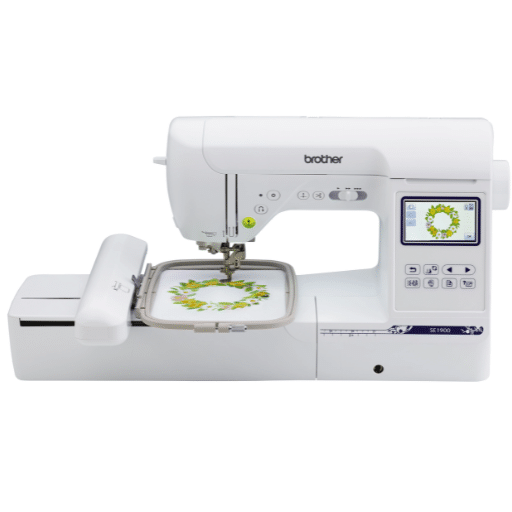
An embroidery machine is a device used for sewing a pattern on a piece of cloth using a thread that is more durable than the general cloth. These machines differ from the conventionally known sewing machines as they come with an additional feature known as software. This allows them to load pre-designed templates from a computer or a built-in chip of the device. The fabric is moved according to the commands issued by the computer installed in the machine while a needle that is driven by the engine of the machine stitches the design onto the material. The result of this is that a perfect and uniform pattern is embroidered onto the material which helps in exploring imagination and further developing designs and styles on materials. For novice users, the machines usually come with text, touch, or video instructions to help the user get through the first stages without experiencing too much pain and frustration.
Understanding the Basics of a Beginner Embroidery Machine
While examining the features of basic beginner embroidery machines, certain aspects should be prioritized to make the experience hassle-free and creative. First, a basic machine must have an easy divide-and-conquer dashboard, usually in the form of a touchscreen which assists with design setups and selection of stitch patterns. Second, these machines usually have several preset designs and also can upload even more, allowing for countless avenues of creation. Another significant aspect is the size of the hoop, which is directly proportional to the size of the embroidery field. In the hands of beginners, a multipurpose hoop size can allow for multiple encasing of devices for different projects. Moreover, automatic threading and tension control, would be considered elementary features that enhance the convenience of operation, that is uniform stitching. A final consideration for a beginner embroidery machine should be all the necessary guides and videos that are useful to help a beginner understand the operations of the machine and be able to practice their craft professionally.
The Difference Between Embroidery Machine and Sewing Machine
Out of an embroidery machine and a sewing machine, I feel that when we focus on their workings, the most obvious comparison is their purpose. Based on what I have learned from the best sources, embroidery machines are intended to put artistic motifs onto cloth, which is fruitful for embellishing textiles. In contrast to sewing machines, their primary goal is not to join pieces of fabric but to do decorative stitching. Sewing machines, in turn, are used for sewing clothes and other household items by sewing straight lines. Although some sewing machines may be high-end and perform some elementary designs, they cannot perform complex designs as the embroidery machine would. It boils down to this essentially: these machines correspond to my tasks for which I decide if I need to add intricate detail to an item or if I construct an object from scratch.
How Machine Embroidery Can Enhance Your Projects
With machine embroidery, the possibilities of enhancing your creative works are endless. Embroidery machine enables the perfect execution of complex patterns which is awkward to achieve by hand as the entire design can be completely intricate in structure. For example, modern-day embroidery machines have such admirable features as inbuilt design libraries, importing designs into computers, and/or changing stitch types and their densities. However, it’s not just the possibilities that these machines provide; that must be judiciously mind when purchasing such machines, maximum embroidery speed of about 650-1000 stitches per minute and optimum range of hoop sizes from 4’’ X 4’’ to 8’’ X 12’’. In addition, adjustable thread tension and multiple needles may be required for different types of fabrics. All these will allow you to create exclusive pieces of art. Be it traditional textiles fun embossed with monograms or contemporary belts that stand out thanks to the client’s logo, the sewing machines will produce the desired effects seamlessly.
How to Choose the Best Embroidery Machine for Beginners

When it comes to selecting the suitable embroidery machine for beginners, there exists a compromise between the focus of the device and the features that are required. It may be helpful to start with a machine that is easier to handle and incorporates clearer LCDs and straightforward navigation menus. The use of built-in guides as well as automatic needle threading can also make learning much easier. Seek machines that do not lack variety in the built-in designs and stitches – just enough to promote creativity but not too much to confuse. For novices, projects requiring a hoop size of 4" x 4" should suffice. Check that a computer program can be linked to that machine to enable pattern expansion as one improves. Last, choose brands that are trustworthy and durable and have a good support and warranty policy. This way, as a beginner, you have the tools and the assistance that you need to improve your skills with time.
Features to Look for in a First Embroidery Machine
One of the most important aspects of choosing your first embroidery machine is to make sure some features suit the beginner and there is also potential. Look for features such as ease of use first; the machine controls should be easy to handle. Includes features such as an automatic needle threader and a drop-in bobbin that can make setup and operation easier. Next, consider the level of the built-in patterns and several stitch styles, it should be plenty to spark creativity but not too much; begin with just the right tools. For most beginner projects, machines with less than a 4″ x 4″ hoop size are usually not effective. Also, connectivity should not be taken for granted. Some machines can connect with USB-enabled devices or computer-based machines allowing the user to easily transfer additional files as he/she progresses. Last but not least, make sure the machine has great build quality and comes with an impressive warranty. Great brands with dependable support can improve your experience by guidance when needed and assistance during troubleshooting. For a beginner, a machine that has such features will ensure his creativity is captured while progress in embroidery skills is made.
Why the Brother PE800 Embroidery Machine is Great for Beginners
To begin, it is readily accessible to masters of the needle who are trying their hand at their first piece of embroidery due to its convenient features. It’s as simple as using the large color touch screen before jumping in and finishing the project using the embroidery tool. It is also the case that it has plenty of design and stitch patterns to choose from with enough scope to get around the confusion threshold for newbies. A machine that has an embroidery field of 5 inches by seven inches is fairly accommodating and allows for stretching out, thus much room for advancement and growth. Brother is another brand that is known to be tough and has good backing in case of a faulty machine, so if I encounter any issues, I know there will be good people to help me. All in all, the Brother PE800 has each and everything that is required to move to the next stage in terms of embroidery processes.
Comparing Sewing and Embroidery Machine Options
It is important to know the basic purposes and their technical parameters when choosing between sewing and embroidery machines. These general sewing machines can be considered multifunctional, able to perform basic stitching tasks like sewing seam lines or alteration making. The basic technical parameters of sewing machines stay the same: the abundance of stitch patterns, their basic speed (stitches per minute), the fluctuation of a needle in various positions, and several levels of tension. Such machine centers catered for amateur customers typically come with a range of useful features including many basic and decorative stitches and a speed of around 600-1000 stitches per minute.
However, the embroidery machines do the opposite. They are designed for ornamental work specifically. Therefore, some of the crucial technical features include hoop sizes, the number of pre-set patterns, and the variety of ways to apply the design. The most basic model in the market should offer at least a hoop size of four,” a few built-in patterns, and the ability to connect and upload more designs through USB ports. A very good example is the Brother PE800 machine, which is both functional and easy to operate thanks to its 5” X7” embroidery fields and large color touch screen making it suitable for beginners with of interest in embroidery.
Very clearly, one’s objectives and expertise should dictate his/her choice of a sewing or an embroidery machine. For embroidery enthusiasts who still want to retain basic sewing skills, there are combination machines that offer both functions and are worth consideration.
Top Tips for Embroidery Beginners
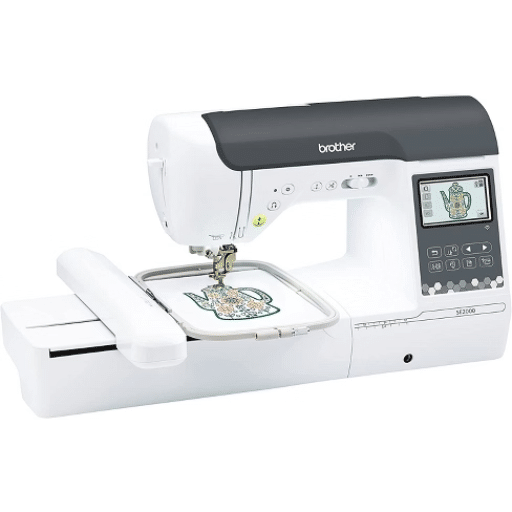
- Start Simple: Pick easy projects and patterns to practice your basic skills. This will help you get accustomed to machine settings and maneuvering fabric.
- Understand Your Machine: Familiarize yourself with your machine’s manual to understand its functions and capabilities. Knowing how to adjust settings like thread tension and stitch length can improve the quality of your work.
- Use Quality Materials: Invest in good-quality threads and fabric. This small up-front investment can prevent thread breakages and ensure better overall results.
- Practice Hooping: Properly hooping your fabric is crucial. Make sure the fabric is taut to avoid puckering, but not so tight that it distorts the material.
- Experiment with Stabilizers: Test different stabilizers to see which works best for your fabrics and designs. Stabilizers can prevent fabric stretching and ensure clean, precise stitching.
- Consistent Maintenance: Regularly clean and oil your machine as per the manufacturer’s guidelines. This will ensure smooth operation and longevity of the machine.
- Break Up Larger Projects: For more complex projects, consider breaking them into smaller segments. This keeps things manageable and can help avoid fatigue.
By following these top tips, embroidery beginners can build confidence and skill, paving the way for more intricate and ambitious future projects.
Getting Started with Machine Embroidery
Machine embroidery is a fascinating and unpredictable craft that blends technology and creativity in crafters to produce elaborate designs in a short time. Here are steps to get you started: Choosing Your Machine: As with any other needlecraft, your first step in starting on your machine embroidery adventure is choosing the right embroidery machine. When it comes to choosing an embroidery machine, beginners tend to buy a machine with the basic features which are easy to use whereas more proficient users try to seek out machines that provide more functionalities. Preparing Your Materials: Embroidery thread and fabric are both important foundations for your machine embroidery and the result of your design depends on these materials. The most popular fabric materials are cotton, canvas, and linen, whereas the most sought-after threads for machine embroidery are polyester and rayon which are strong and vibrant in color. Understanding Tools and Accessories: Other useful materials for machine embroidery include hoops, needle sets, and stabilizers which are an accessory in embroidery. Hoops are primarily used to reference and hold all fabric tight while the stitching is being completed, stabilizers on the other hand are used to secure the fabric on the edges to eliminate the chances of distortion or puckering. Design Selection: Thanks to the digital revolution, many websites showcase numerous embroidery designs. For beginners, this is best done by starting with simple designs; more advanced designs can be attempted after practice. Most embroidery machines also come with embroidery design templates, and for those that don’t, computer software programs that allow users to create their patterns can easily be downloaded.
Loading Designs: To load your embroidered design into the machine, please learn how to do so via USB, using the computer, or the machine’s built-in software. It requires knowing which formats the machine can read as well as the layout of the design on the fabric.
Embroidery Process: In this step, make sure your fabric is properly hooped and your stabilizer is attached securely. Installation of fabrics is done through basic straight stitching; once your fabric is installed, start the embroidery with a selected pattern, watch the operation, and perform basic operations. At regular intervals, observe the thread tension and the machine to avoid any threading problems.
Beginners are likely to emerge confidently into the world of machine embroidery and focus on creating beautiful intricate outlines by following these steps correctly.
Essential Embroidery Designs for Beginner Projects
My adventure of looking for particular embroidery patterns for novice projects led me to the fact that starting with simple shapes such as basic geometric patterns is quite common among professionals. Practicing such designs is not only useful but it also allows the stitches to hone their skills in manipulating the embroidery machine and fabric controls. Also in demand are floral patterns usually done with simple flowers and leaves which can complement the design without adding too much complexity. Many prominent sites of embroidery recommend starting with line art and monograms as it allows one to focus on developing thread tension on the needle as well as stitch length. Many of the embroidery resources argue that one should first gain these initial designs to enhance creativity but not the complexity of the designs.
How to Utilize Built-in Designs
To utilize built-in designs effectively in your embroidery projects, follow these concise steps:
- Explore Design Library: Familiarize yourself with the preloaded designs available on your embroidery machine. Machines often come with a variety of themes, including florals, animals, and abstract shapes.
- Select a Design: Choose a design that complements your project. Consider factors like design size, stitch count, and complexity to ensure it’s suitable for your fabric and intended application.
- Adjust Design Settings: Use your machine’s interface to adjust technical parameters, such as design size, rotation, and mirror imaging. Ensure these settings match your fabric dimensions and hooping area.
- Stabilize Fabric: Properly stabilize your fabric based on the design’s stitch density and fabric type, using appropriate stabilizers like tear-away or cut-away.
- Test Stitch: Before finalizing, perform a test stitch on a similar fabric sample. This helps verify design alignment, thread color choices, and tension settings.
- Execute Embroidery: Once satisfied with the test, hoop your material, load the design, and start the embroidery process, carefully monitoring the progress for any issues.
By following these steps and adjusting parameters according to your machine’s options, you’ll efficiently make the most of built-in designs in your embroidery projects.
Common Challenges Faced by Beginners and How to Overcome Them

For anyone starting an embroidery project for the first time, their challenges may be very intimidating. However, knowing the common challenges better prepares one for the particular craft as this will be addressed in the write-up. First, one must know how to choose the fabric and stabilizer as an incorrect choice may result in puckering or misalignment. This should be avoided as a beginner should test out different combinations of fabric and stabilizer and see how effective they are. So, it is also recommended to avoid straining the thread too much because it can be hard to overcome. It’s also possible for a beginner to experience thread breaks or uneven stitching; this is due to inappropriate tension settings – tension can be changed depending on the fabric’s thickness and type. Grasping the finer details of designs can also be a problem. Such precision can be achieved with the use of grids, or templates to align the design and the fabric correctly and ensure accuracy. Finally, the appropriate thread and needle sizes must be chosen; most beginners should look at some instructions or ask a more seasoned embroidery lover for help. By overcoming these problems, anyone who does embroidery for the first time and wants to improve their embroidery will feel self-assured about their upcoming embroidery projects.
Troubleshooting Embroidery Machine Issues
It is no exaggeration to say that embroidery machine issues can be a major roadblock to one’s task, but the situation must be viewed with calmness because some basic troubleshooting steps could fix many of these problems. In case of tension-related embroidering issues, remember to retread discharge with the thread in the proper position in all the guides and tension discs. In general, to get balanced stitch quality, it is oftentimes necessary to adjust both the top and bobbin’s tension. When the stitching is bad, people always forget to check the needle. Skipped stitches are possible as a result of the incorrect type of needle or the usage of a dull needle. Needles should also be changed in regular intervals and size which pertains to the fabric and thread should be utilized. A reset of the machine or a cleaning, thorough in nature, might be necessary in the event of electrical or mechanical malfunction. Use the text of your machine’s manual as a guide along with the caution when removing lint from the bobbin case and other parts. If such practices fail to resolve the problem, technician support should be contacted regarding the specific model of the machine. If these problems are attended to all the time, it will not be difficult to keep the machine performance on a satisfactory level for excellent results of embroidery projects.
Understanding Hoop Size and Embroidery Area Limitations
Let us begin with hoop size and confines in the working area of the embroidery design. There is always a need to know the limits of the embroidery machine. Each embroidery machine has a maximum stitching area which is imposed by the size of the largest embroidery hoop available with that machine. This limit defines how big a pattern you can embroider in a single pass, i.e. without the need for rotation or replacement of the workpiece. The ability to rotate a design is a useful feature, but it normally adds to the cost as well. As such, it is recommended that you always check the manufacturer’s documentation before getting a machine or its additional hoops. In addition, some machines overcome the problem of dimensional limitation by permitting the design to be split into two or more parts, but this can add a level of sophistication and may also make some software components necessary. You should also bear in mind the size of the projects you wish to undertake whether or not they will be within your embroidery hoop to avoid any frustrations later.
Improving Embroidery Work Quality
I wish to mention some valuable details that I stick to to enhance the quality of my embroidery work. For starters, I take care to adjust the needle size to the fabric and thread I am working with. In addition, I make sure to change the needle quite often to prevent skippings of stitches owing to the needle being dull. Routine cleaning of my embroidery machine is equally important; I am precise in what I do as regards what the manual requires me to do in maintaining the bobbin case and other components. In case of mechanical problems, I have always been able to reset the system or call tech support for guided assistance. Regarding the dimensions of the hoops and the size of the area for embroidery, I normally make it a point to check the maximum specifications of my equipment for the project that I am working on as I ensure that the hoops are compatible with the project in question. If the patterns that I am working with are very large and require splitting into parts, I use some extra software, although I am aware of – and cautious about – the problems of such a move. It is obvious that following the recommendations above, I boost the quality of my embroidery work as well as ensure effective workflow.
Frequently Asked Questions About Embroidery Machines for Beginners

1. What is the best machine for an embroidery novice?
When it comes to picking an embroidery machine, first-timers should opt for those with simple controls, easy-to-understand operation, and multi-function options. Among others, Brother and Singer brands are popular as they provide effective and operational embroidery machines to beginners.
2. Is it mandatory to attach a computer with an embroidery machine?
Not really. Some embroidery machines are self-contained and work with internal patterns but a computer opens up doors in using the USB ports for downloads and additional programs for more patterns.
3. How frequently is it recommended to service the embroidery machine?
Every machine needs regular attention to work seamlessly. After every single usage, the user should wipe and clean the bobbin case along with the lint and all the other such places that may prove to be reservoirs of dust particles and follow the suggested service intervals of the machine manufacturer.
4. What are the fabric considerations for embroidery? Is it possible to embroider any cloth with any material?
Most fabrics are good for embroidery but there may be some exceptions. Heavier fabrics such as denim may demand bigger needles to penetrate the surface while the silk fabric which is light may have to be stabilized in order not to create unwanted folds and distortion patterns.
5. As a newcomer in the field, what purchases should I further on make further?
Primary tools and materials should cope with different sizes of needles, adequate embroidery thread, stabilizers, and hoops. As you become more skilled, you may introduce software and design packages to make your projects more diverse.
What Makes a Good Machine for Beginners Looking to Start?
Several factors make up a good machine for beginners. The first one to consider is the ease of starting new projects; therefore, it is best to pick an embroidery machine with an advanced user interface. Other features that enhance user-friendliness include a touchscreen interface, built-in designs as well as automatic threading of needles. The second one is the ability to connect the machine to a USB port or to a computer, which makes it possible to upload new designs and increase the design library. Also, adjustable velocity for crafting an embroidery work and some variety in stitch types may help in focusing on the user’s tastes as well as the requirements of different tasks. The last factor is that good technical assistance and well-made guides are very helpful in the case of problems to overcome and new skills to acquire, thus making it easier from being a novice to a resourceful embroiderer.
Is a Dedicated Embroidery Machine Necessary?
As I was taking my initial steps in the art of embroidery, I often wondered whether a machine solely meant for embroidery was a necessity. However, after profound research and seeking necessary information from reputed online sources, I discovered that even though a specialized machine can greatly speed up the process, it is by no means a requirement for a beginner. A regular sewing machine with some embroidery features can be useful for smaller or less complex projects. On the contrary, a specific machine for embroidery has some advantages too such as more complex designs and a higher speed of stitching. So, if you are serious about making embroidered items quite often or dealing with more complicated designs, obtaining a specialized unit may be a good idea. However, starting with a versatile machine encourages growth and experimentation without requiring too much money upfront.
Can I Run a Small Embroidery Business with a Beginner Machine?
Yes, it is possible to initiate a small embroidery business even with a beginner machine with some basic equipment, however, several things must be considered to see if it is a good option for you. Starting machines have standard-level functions for true-to-size lower production. They have slower stitch speeds of an average of 400 to 800 stitches per minute and an average embroidery area which varies from 4 x 4 inches to 5 x 7 inches. The machines may have some stitching options but not extensive built-in designs. Nonetheless, they are quite easy to operate, and they are also quite cheaply priced thereby making them a potentially good option for a new business. With the growth of the business, there will be a need for more advanced machines that can cater to more volume, more intricate designs, and larger areas of embroidery. All in all, there is the advantage of starting with low-cost beginner machines as they allow for testing the market and developing the art without heavy costs upfront.
References
- What is a Good Embroidery Machine for Beginners? – Ricoma Blog
- Best Embroidery Machines For Beginners – Tough Kitten Crafts
- How to get Started with Machine Embroidery: Supplies you Need – Karlie Belle
Frequently Asked Questions (FAQ)
Q: What should I consider when buying an embroidery machine for beginners?
A: When buying an embroidery machine for beginners, consider factors like ease of use, availability of built-in embroidery designs, the size of the embroidery hoop, and whether you want an embroidery-only machine or one that combines embroidery and sewing features. A machine that’s user-friendly and offers basic embroidery functions is perfect for beginners.
Q: How do I choose the right embroidery machine for my needs?
A: Choosing the right embroidery machine involves evaluating your specific needs and budget. Consider whether you need a machine embroidery for beginners, the types of embroidery patterns you wish to create, and if a brother embroidery machine suits your requirements. A choice for beginners looking to explore embroidery would be a machine that’s straightforward and offers ample built-in embroidery designs.
Q: Are there specific embroidery machines that are perfect for beginners?
A: Yes, there are specific machines perfect for beginners. Look for machines with user-friendly interfaces, the ability to import machine embroidery designs, and adjustable embroidery size options. The best beginner embroidery machine will have features that allow easy learning and project execution.
Q: What are the benefits of a Brother embroidery machine for beginners?
A: A Brother embroidery machine often comes with a range of features such as built-in embroidery designs, a variety of embroidery hoop sizes, and a reputation for reliability. These machines are typically user-friendly, making them ideal for beginners looking to explore embroidery without being overwhelmed.
Q: Can I use embroidery patterns from hand embroidery on a machine?
A: Yes, many hand embroidery patterns can be adapted for machine embroidery. You can either find machine embroidery versions of your favorite hand embroidery patterns or digitize them into designs that your embroidery machine can read and execute.
Q: Is there a difference between a high-end embroidery machine and a basic one for beginners?
A: High-end embroidery machines often offer more advanced features like larger embroidery areas, more built-in designs, and higher speed capabilities. In contrast, a basic embroidery machine for beginners will focus on simplicity and ease of use, which is ideal for those new to the craft.
Q: What are the advantages of having built-in embroidery designs in a machine?
A: Having built-in embroidery designs in a machine means you can start embroidering projects right away without needing to purchase or create additional designs. It simplifies the process for beginners and provides a variety of options to practice and enhance their skills.
Q: Why should beginners consider a machine that combines embroidery and sewing?
A: Beginners may find a machine that combines embroidery and sewing to be versatile and cost-effective. It allows them to explore both crafts without needing to invest in separate machines, making it a practical choice for those wanting to expand their creative capabilities.




